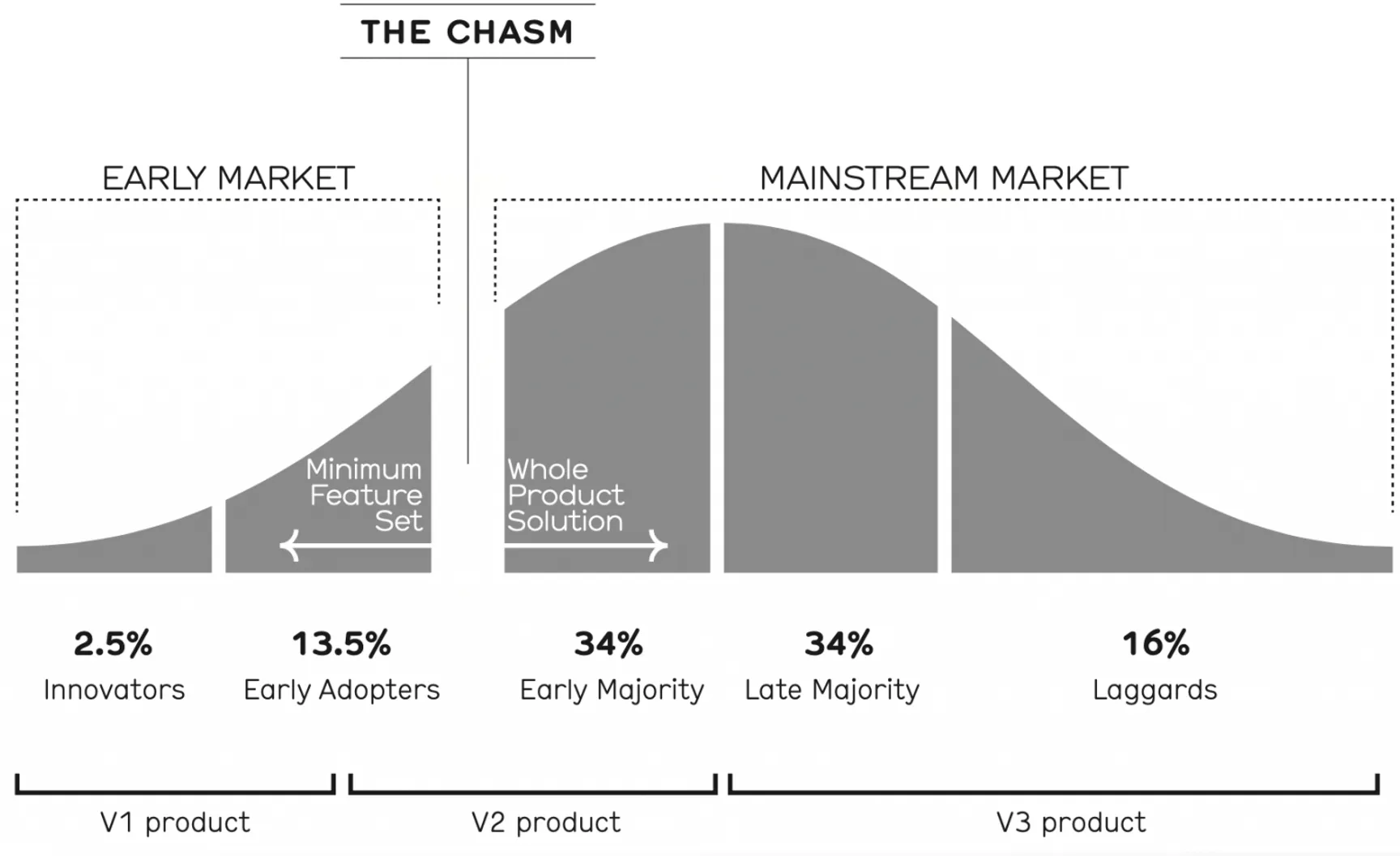When we think of launching a product, the term “MVP” (Minimum Viable Product) often comes up. Many people think that getting something “minimally viable” to market quickly is part of the roadmap to success. However, we found there are deep misunderstandings on this topic. If your objective is to build a company that thrives over time, a successful version 1.0 product gathers plenty of actionable feedback that sets you up for more success as you iterate the product in future versions.
At the same time, if that first version is to be a reasonable success that funds at least a part of the development and launch of the following version, it also needs to be a ‘complete’ product that a certain type of customers will love. That’s often missed in the “let’s launch an MVP ASAP” approach. People need to remember, an MVP is great to collect feedback during product development, and really the P in MVP should stand for “prototype” not “product”.
As Tony Fadell explains in his great book Build: An Unorthodox Guide to Making Things Worth Making, a version 1.0 product is not about perfection but about learning. It’s about releasing something innovative enough to capture attention and useful enough to inspire feedback that will influence your V2.0 and more. Here is his reasoning, in greater detail.
The Purpose of Version 1.0 product: Feedback and Insight
In Build, Fadell underscores that a successful version 1.0 product is designed to engage early adopters and encourage them to share their experiences. These early users aren’t expecting perfection; they seek novelty and value. Their positive and negative reactions are the information that influences the development of a more polished V2.0.
What a good V1.0 offers
- Stands out offering something new
- Solves real problems that customers will find helpful
- Has a way for customers to give feedback, such as a survey
- Is the foundation of future versions
The High-Level Roadmap: From Version 1.0 to Success in the Market
In Build, Tony Fadell provides this roadmap that shows how a product evolves from version 1.0 to version 3.0. The roadmap is not just about adding features, it’s also about improving the consumer’s experience. Each version builds on the last, expanding the product’s appeal and refining its functionality:

(Image courtesy of the book itself, Build: An Unorthodox Guide to Making Things Worth Making)
Let’s break down each version:
- Version 1.0: Imperfect, but it still provides real value to consumers and is a vehicle to get feedback. Early adopters are more likely to purchase the product as they recognize its potential.
- Note the chasm between V1.0 and V2.0, expect quite a different product as you go into future iterations.
- Version 2.0: This iteration fixes key drawbacks stated in the feedback about the V1.0. This iteration will be more attractive to a wider pool of customers, i.e. the early majority.
- Version 3.0: The next iteration further evolves using learning from the earlier versions, and it now caters to a very wide market. By now the products should be utterly reliable and free of defects, as well as being as feature-rich as originally planned for. Due to the wide market and probable recognition, any problems can cause reputational damage.
Where is the MVP?
Simply put, nowhere. Using this approach, there is nothing ‘minimum’ about any of these versions. Every version is aimed to be a complete product that stands up with consumers. The concept of a Minimum Viable Product, popularized by Eric Ries in The Lean Startup, focuses on launching a product with just enough features to gather user feedback and validate the core idea.
(In our understanding, Ries was thinking more about prototypes during development, but people just ran with that concept and through it applies to products released on the market for sale… and in many cases that’s wrong.)
In the context of launching a new product, a product that is more complete is likely to be loved by the types of customers it targets, rather than just accepted… that’s a big difference that could have a great impact on your product and business’s success. Some call this launching SLC Products (Simple, Lovable, and Complete), rather than Minimum Viable Products.
Conclusion: Embrace the Journey
As Fadell’s book reminds us, your version 1.0 product is a learning opportunity, not the final destination. It is a staging point and lays the groundwork for better future versions. (At least that’s true for consumer electronics that eventually target a wide market.)
This is particularly relevant for anyone who is still early in their product design & development project and needs to decide what features to include in the first version. They nearly always tend to include too much functionality, too early. And it means longer and more expensive development and overall lower chances of success.
****
By the way, we did discuss this topic on our group’s podcast, so feel free to listen along:



